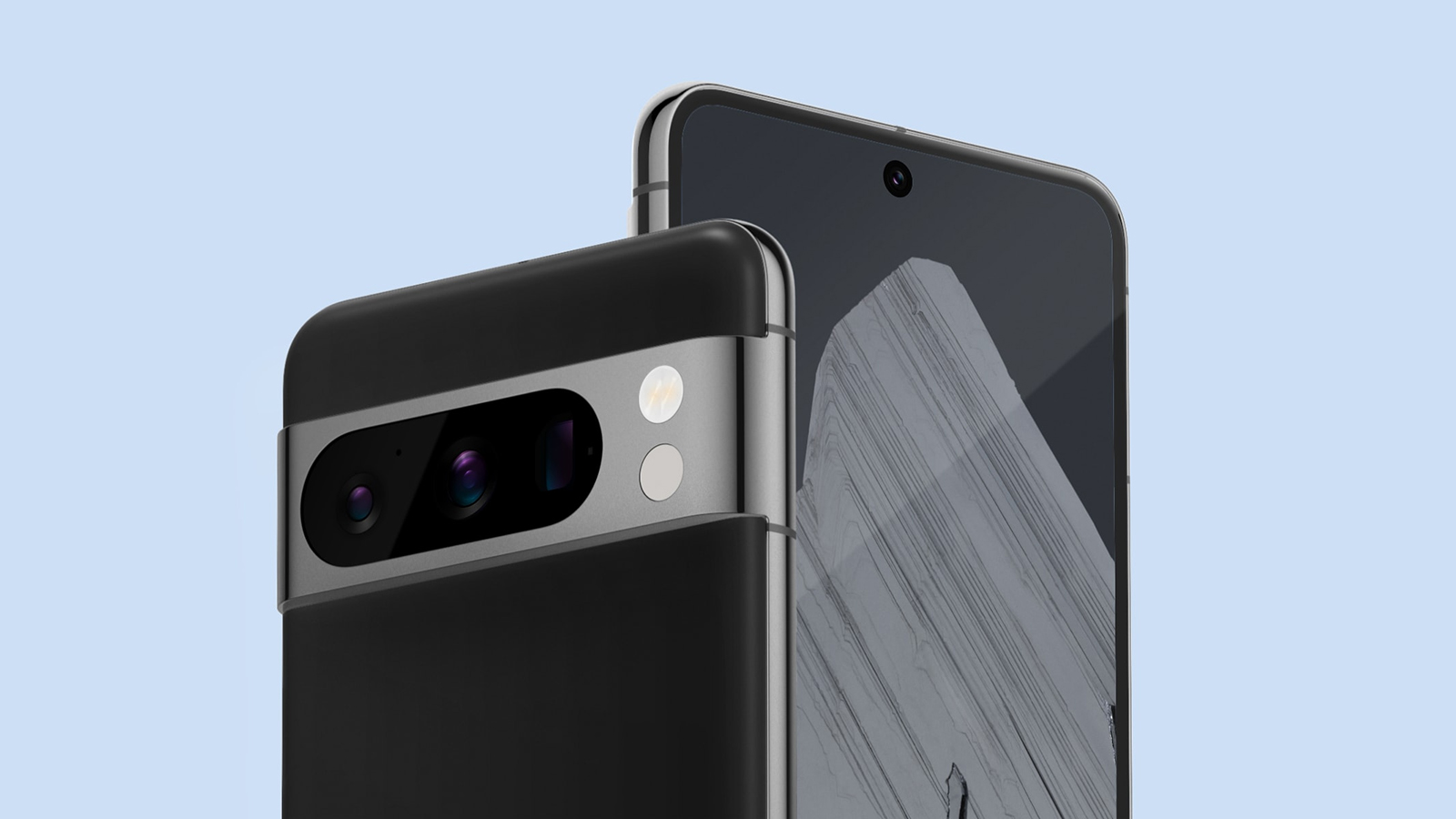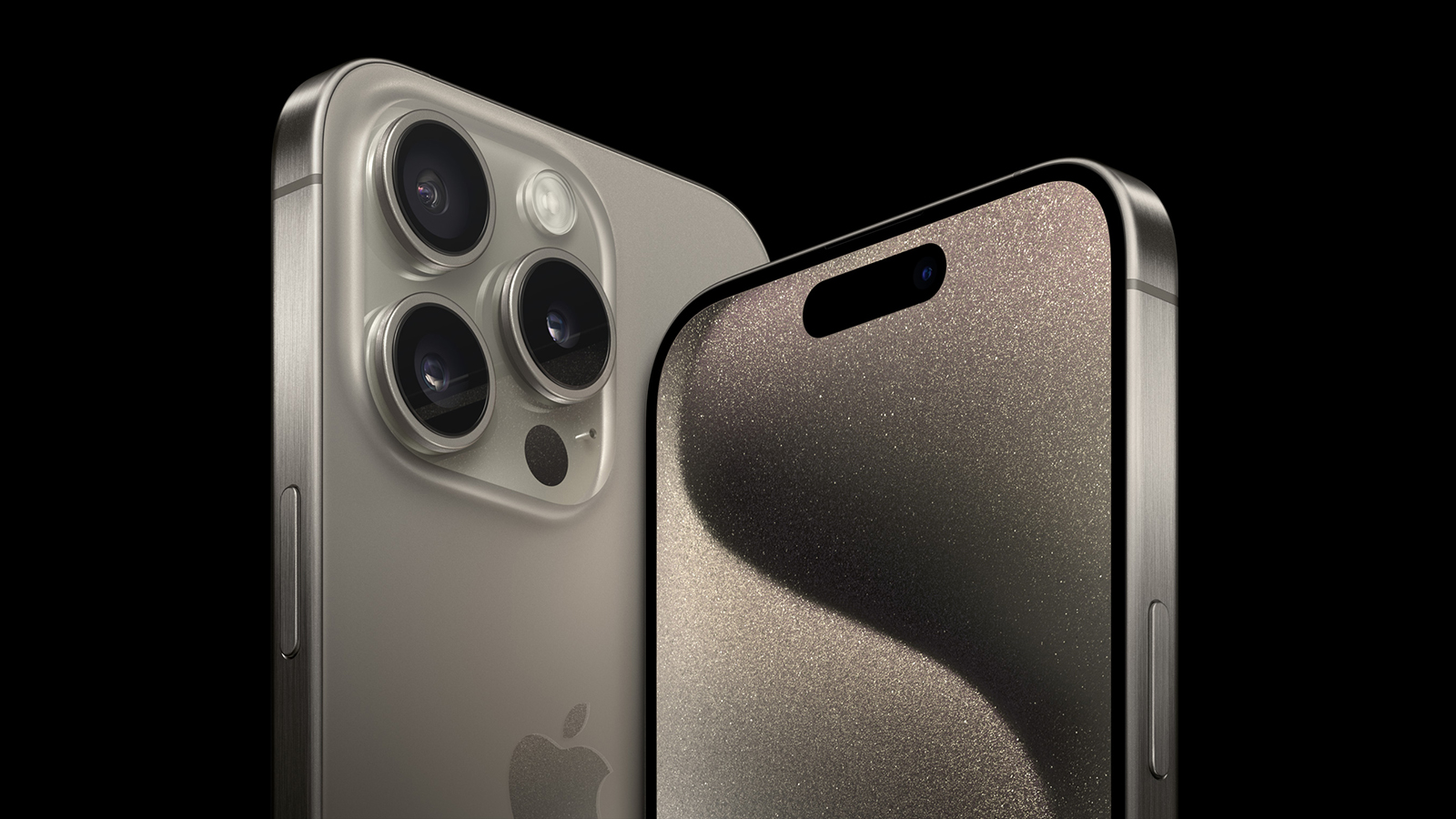Google Pixel 8 Pro vs Apple iPhone 15 Pro: tempted to switch?
We put the Google flagship phone for 2023 up against the Apple flagship phone for 2023


Now we've got the big launch events from both Google and Apple out of the way, we know everything there is to know about the Google Pixel 8 Pro and the Apple iPhone 15 Pro – so which one should you be choosing for your next smartphone upgrade?
That's not an easy question to answer, such is the high level of quality and performance offered by these two handsets, but we've done our best to give you all the details you need to know in the sections below.
From battery life to screen size, from chipset performance to installed software, we've covered every conceivable aspect of these two handsets. If you need even more buying advice, check out our guide to the best phones you can buy.
Pixel 8 Pro vs iPhone 15 Pro: what's new?
If you're looking for the headlines when it comes to what's new with the iPhone 15 Pro this year, here they are: USB-C rather than Lightning for the data transfer and charging port, titanium rather than stainless steel for the frame, and in place of the old mute button there's a more versatile Action button (that can do muting too).
Other than that, we have the usual incremental upgrades in terms of processor speed and camera performance, which we'll dig into in the sections that follow. There's plenty that hasn't changed too: the screen size is the same at 6.1 inches, and both phones can run iOS 17 (which was launched to coincide with the release of the iPhone 15 series).
As for the Pixel 8 Pro, Google's latest handset makes its screen flat (the older Pixel 7 Pro had a curved edge), uprates the processor (now Tensor G3), adds a new Object Temperature sensor, and a variety of fancy new AI modes in its improved camera system (the 50MP main is a new sensor, the wide-angle is now 48MP, while the 5x zoom sees improvements).

The Google Pixel 8 Pro
Pixel 8 Pro vs iPhone 15 Pro: price & availability
We now have the full pricing details for both of these flagship phones: you can pick up the Pixel 8 Pro from Google for £999 / $999 for the 128GB version, £1,059 / $1,059 for the 256GB version, and £1,179 / $1,179 for the 512GB version. In the US, you can also pick up a 1TB version of the phone for $1,399.
Get all the latest news, reviews, deals and buying guides on gorgeous tech, home and active products from the T3 experts
As for the iPhone 15 Pro from Apple, that will set you back £999 / $999 for the 128GB version, £1,099 / $1,099 for the 256GB version, £1,299 / $1,299 for the 512GB version, and £1,499 / $1,499 for the 1TB version.
Pixel 8 Pro vs iPhone 15 Pro: design
- Pixel 8 Pro: 162.6 mm x 76.5 mm x 8.8mm / 213g
- iPhone 15 Pro: 146.6 mm x 70.6 mm x 8.3mm / 187g
The Pixel 8 Pro is the bigger handset compared with the iPhone 15 Pro: the Google flagship sports a 6.7-inch screen, while the Apple device has a 6.1-inch screen.
Out of the two phones, the Google one is unsurprisingly heavier, which in part shows the benefit of Apple's new titanium finish. The Pixel also has the distinctive rear camera bar that we've become familiar with from Google's line, while the rear cameras on the Apple handset are grouped up in the top left-hand corner.
You can pick up the Pixel 8 Pro in Obsidian (dark grey), Porcelain (off-white) or Bay (blue), while the iPhone 15 Pro comes in Black Titanium, White Titanium, Blue Titanium or Natural Titanium (a sort of light green-grey). As those names suggest, the iPhone 15 Pro has a titanium frame, compared with the aluminium frame of the Pixel 8 Pro.

The iPhone 15 Pro
Google Pixel 8 Pro vs Apple iPhone 15 Pro: display
- Pixel 8 Pro: 6.7in OLED, 2992 x 1344 pixels, 120Hz, 2400 nits
- iPhone 15 Pro: 6.1in OLED, 2556 x 1179 pixels, 120Hz, 2000 nits
As we mentioned above, the Pixel 8 Pro has the larger screen,with an aspect ratio of 20:9, plus a maximum refresh rate is 120Hz (which is now dynamic from 1-120Hz).
When it comes to the iPhone 15 Pro, the screen size is the smaller of the two, as is the resolution (but it's roughly equivalent in sharpness terms). The other specs are very similar: it's an OLED panel with a maximum 120Hz refresh rate, but a 19.5:9 aspect ratio.
Both displays support always-on technology, so you can still see notifications, widgets, and a clock while the screen is dimmed. Both displays can also adjust their temperature and brightness based on the ambient light conditions. The Pixel's screen is potentially brighter overall though.
Pixel 8 Pro vs iPhone 15 Pro: hardware
The Pixel 8 Pro comes with the Google Tensor G3 chipset inside it, while the iPhone 15 Pro carries the A17 Pro chipset. The Apple chip wins in terms of most benchmark scores, though you won't notice any sluggishness from either phone – and it's worth noting that the G3 has an impressive amount of AI power packed into it.
There's more RAM inside the Pixel 8 Pro – 12GB compared with 8GB – though Apple's iPhones can usually get away with less because of the efficiency with which the hardware and the software run together on the phones.
It's worth noting that the iPhone 15 series, including the iPhone 15 Pro, now uses USB-C for its port standard, the same as the Pixel 8 Pro. They unlock using different methods though: fingerprint recognition for the Google phone, via a sensor embedded under the screen; face recognition for the Apple handset, via a sensor at the top of the display.
Both of these phones offer an IP68 rating in terms of water and dust protection, although Google doesn't go into any detail about just how waterproof its phone is. Apple says the iPhone 15 Pro can manage up to 30 minutes underwater at a depth of 6-metres before it will be damaged.

The Google Pixel 8 Pro
Pixel 8 Pro vs iPhone 15 Pro: software & AI
You get the latest Android 14 mobile OS with the Google Pixel 8 Pro, and the latest iOS 17 mobile OS with the Apple iPhone 15 Pro, so in both cases you're right up to date.
Google has promised seven years of security updates with the Pixel 8 Pro, and while Apple doesn't specifically promise a certain number of years for its own security updates – which carry on after major OS updates have stopped – it's usually around the same.
We don't have the space here to delve into a full Android vs iOS discussion, but in a lot of ways the two software platforms are now more or less equal. It's fair to say that iOS works best if you're heavily invested in the Apple ecosystem though, and Android works best if you're heavily invested in the Google ecosystem.
Both Google and Apple continue to push AI-enabled features, but it's clear that Google is pushing more of these features, and pushing them harder too: from removing objects from photos (Magic Eraser) to cutting out background noise from videos (Audio Magic Eraser) to screening calls using the Google Assistant, the Pixel 8 Pro is packed with AI tricks.
Pixel 8 Pro vs iPhone 15 Pro: battery
The Pixel 8 Pro has a 5,050mAh capacity battery fitted inside it, whereas the iPhone 15 Pro has to make do with a 3,247mAh capacity battery. Capacities only tell part of the story of course: battery life also depends on how quickly that capacity is drained.
Google says the Pixel 8 Pro can reach 31 hours between charges based on "a mix of talk, data, standby and use of other features". Apple says the iPhone 15 Pro can last up to 23 hours of constant video playback.
Both these handsets offer wired and wireless battery charging, so you've got the flexibility to take your pick whichever one of these you go for: the Pixel 8 Pro wins in terms of wireless charging speed though, 23W versus 15W with the iPhone 15 Pro and MagSafe.
Pixel 8 Pro vs iPhone 15 Pro: cameras
- Pixel 8 Pro: Main (new 50MP, f/1.68), Wide (48MP, f/1.95), Tele (5x, 48MP, f/2.8)
- iPhone 15 Pro: Main (48MP, f/1.8), Wide (12MP, f/2.2), Zoom (3x, 12MP, f/2.8)
Google and Apple have been promoting these phones as excellent choices for serious photographers, and it's easy to see why: the Pixel 8 Pro packs a triple-lens 50MP wide + 48MP telephoto + 48MP ultrawide on the back, with a 10.5MP selfie camera on the front. That rear camera gives you 5x optical zoom.
Compare that to the iPhone 15 Pro, offering a triple-lens 48MP wide + 12MP telephoto + 12MP ultrawide on the rear of the phone, and a 12MP selfie camera at the top of the front display. Here the optical zoom is limited to 3x on the rear camera.
Megapixels aren't everything of course, and you'll find that you can get superb photos and videos from both these handsets, with plenty of built-in image and video optimisations at your disposal too.
Google Pixel 8 Pro vs Apple iPhone 15 Pro: conclusion
As you can tell from everything we're written above, these are two very impressive handsets that are fairly evenly matched – the pricing is almost identical, for example, and both phones offer the latest software updates and triple-lens rear cameras that are going to give you brilliant photos and videos every time.
If you're trying to choose between these two handsets, a big consideration is going to be whether you want to use Google's Android or Apple's iOS, and that might well be something you've already made up your mind about. The iPhone 15 Pro is just about the best iPhone around, and the Pixel 8 Pro is just about the best Android phone around.
Design and size is a factor too: both the Pixel series and the iPhone series have their own distinct look, and you might find that you prefer one over the other. The Pixel 8 Pro is substantially bigger than the iPhone 15 Pro, and that matters in everything from stuffing the phone into your pocket to the amount of screen space you've got for your apps. If you want a bigger iPhone there's always the iPhone 15 Pro Max, of course.
Everything considered, we find it hard to split the Pixel 8 Pro from Google and the iPhone 15 Pro from Apple, and we don't think you're going to be disappointed whichever one you decide to go for. As for objectively saying which one is the better phone, there's actually no clear winner – it all depends on what you're looking for in a handset and what you prioritise in terms of a smartphone's features.
Dave has over 20 years' experience in the tech journalism industry, covering hardware and software across mobile, computing, smart home, home entertainment, wearables, gaming and the web – you can find his writing online, in print, and even in the occasional scientific paper, across major tech titles like T3, TechRadar, Gizmodo and Wired. Outside of work, he enjoys long walks in the countryside, skiing down mountains, watching football matches (as long as his team is winning) and keeping up with the latest movies.
